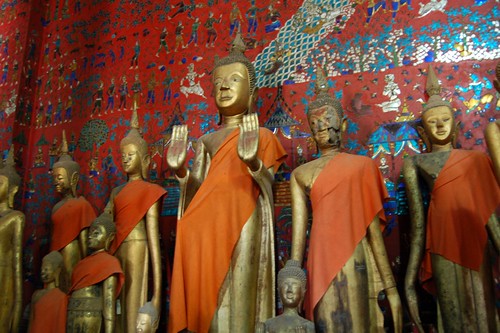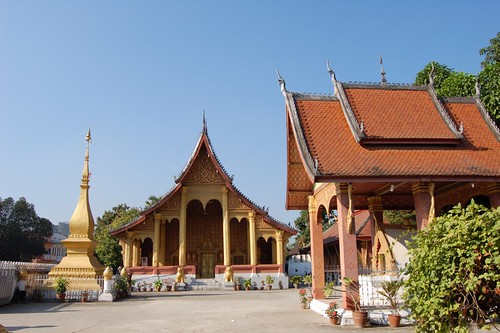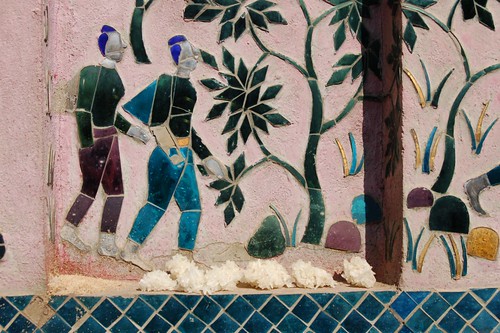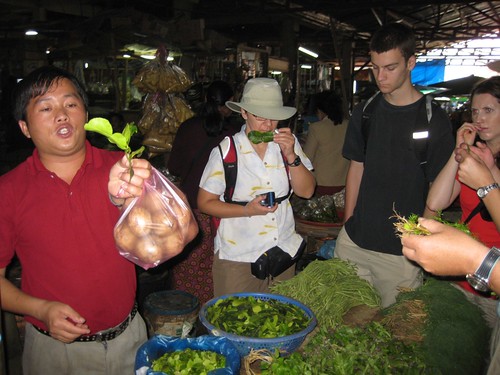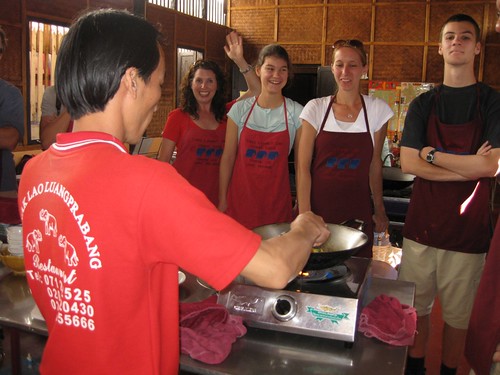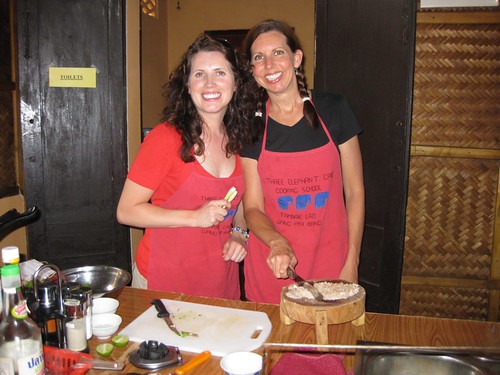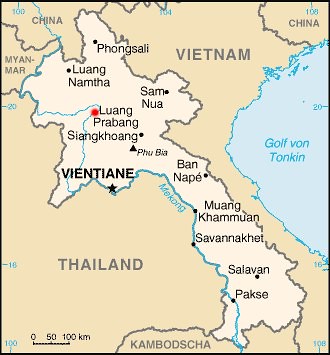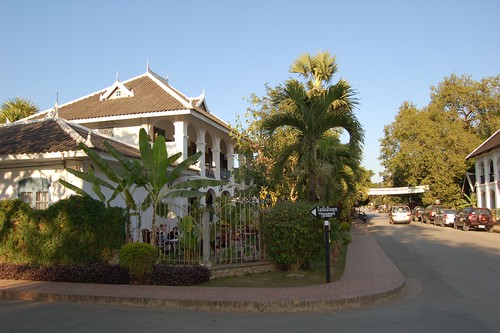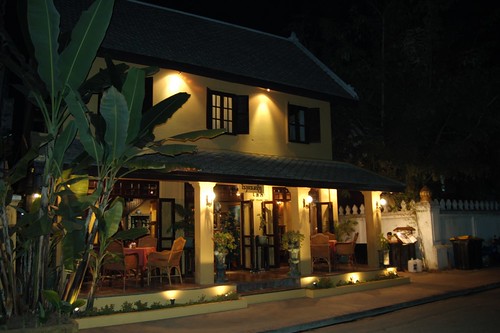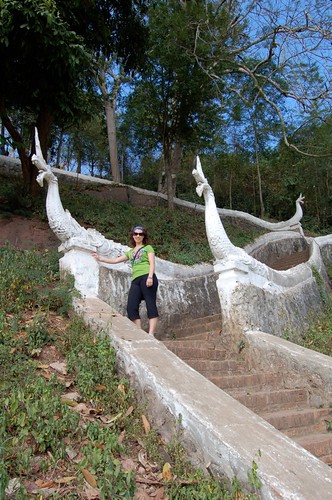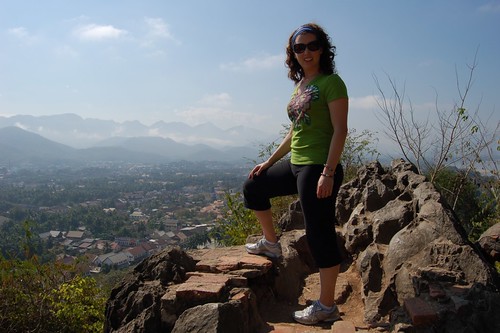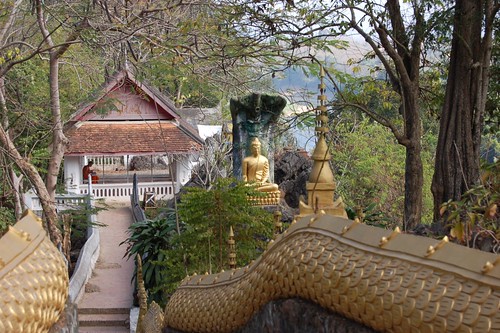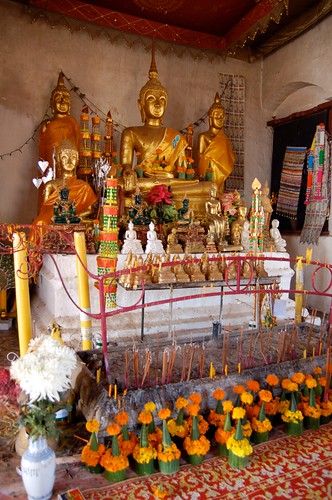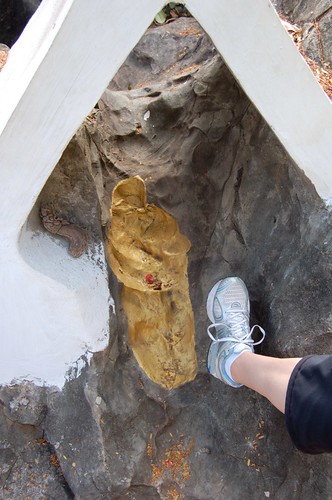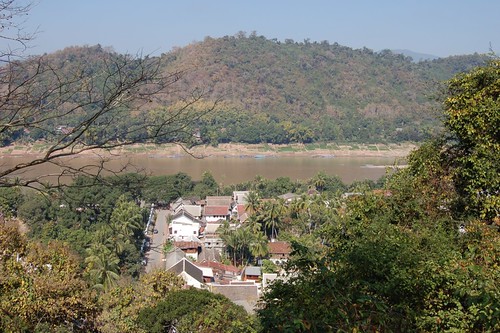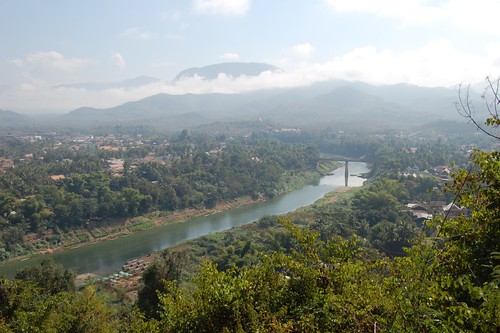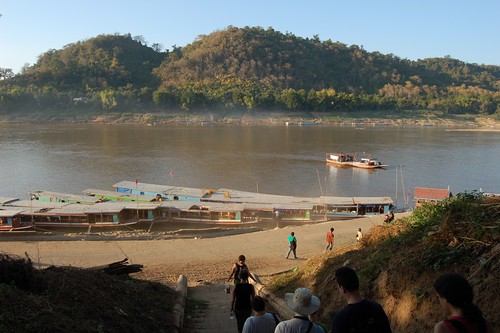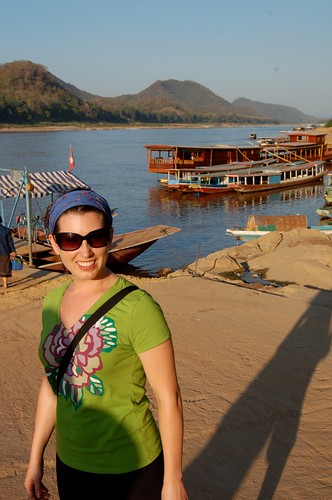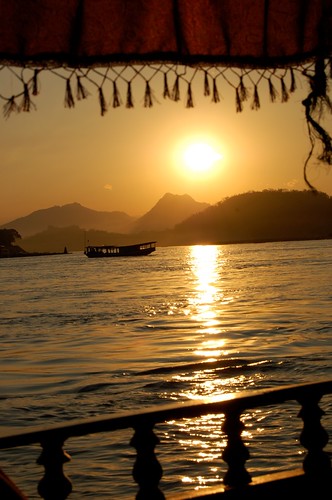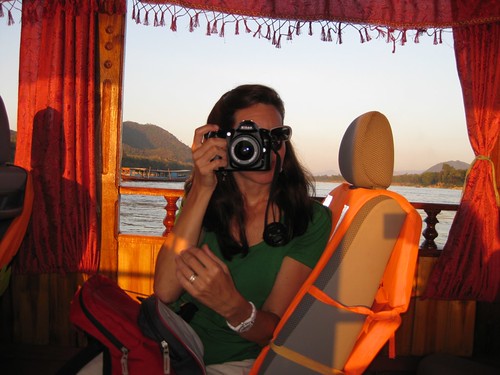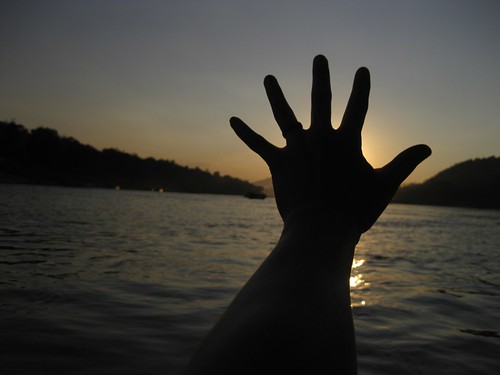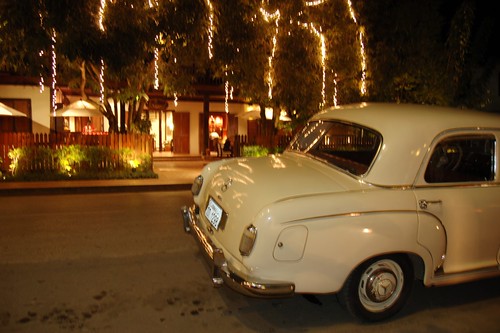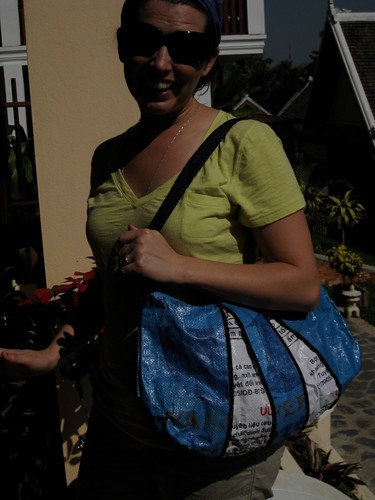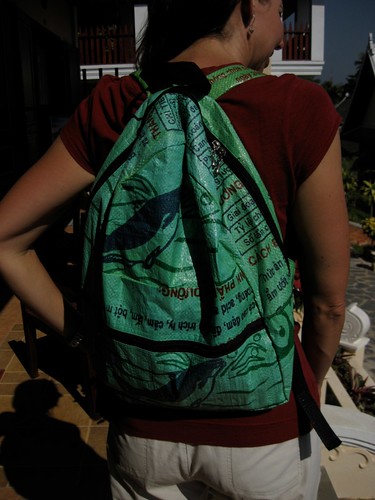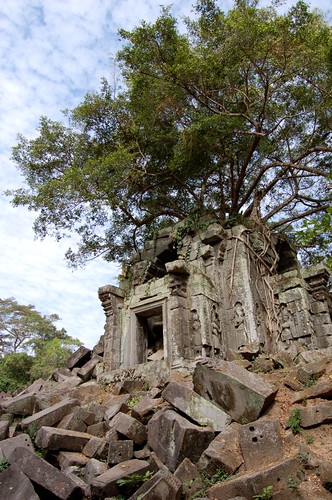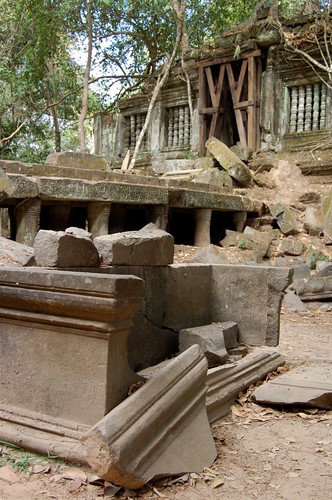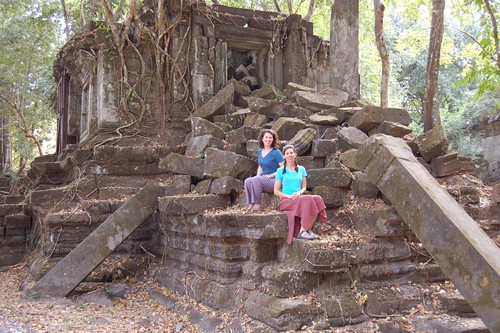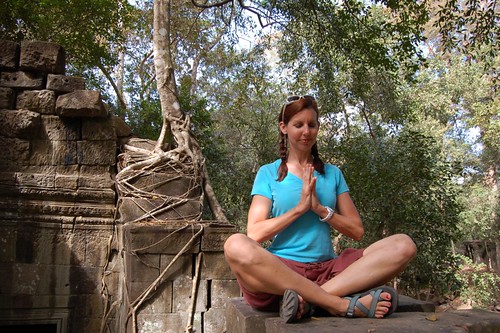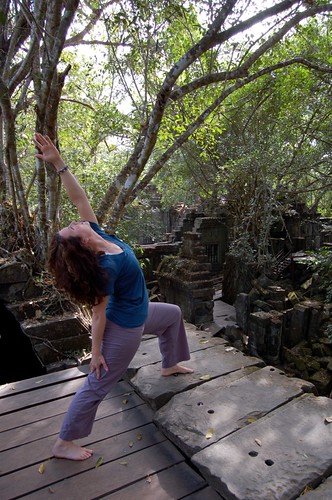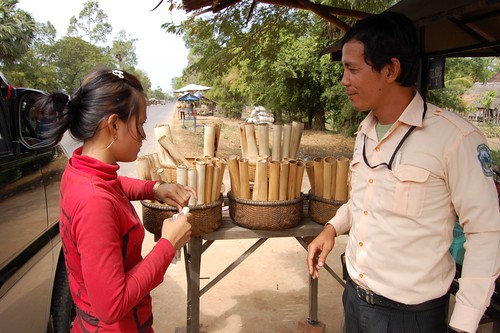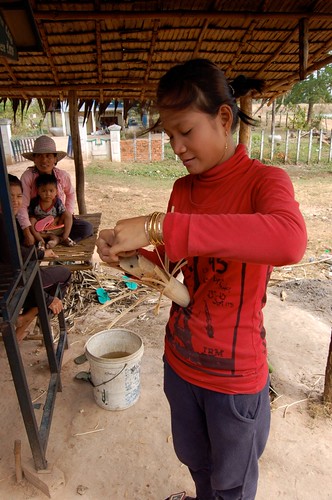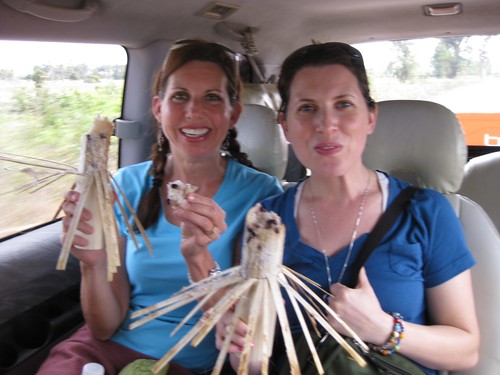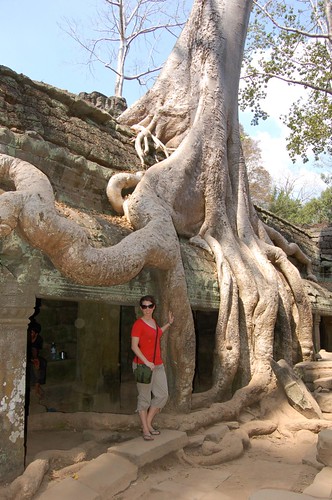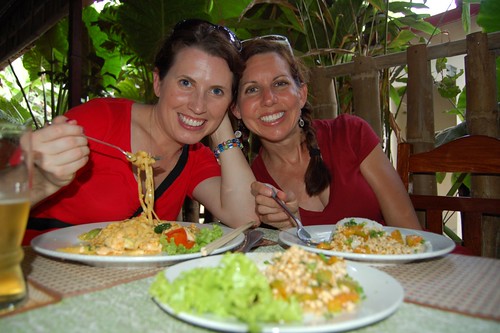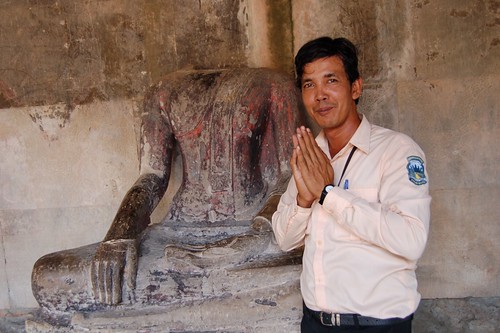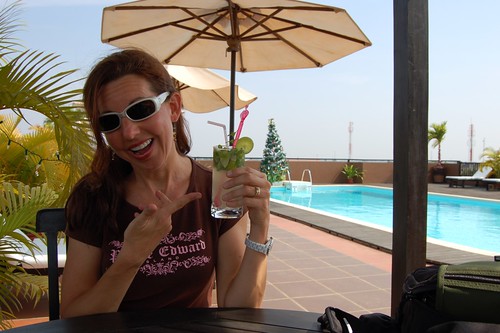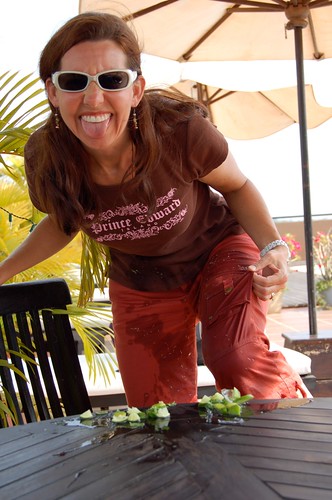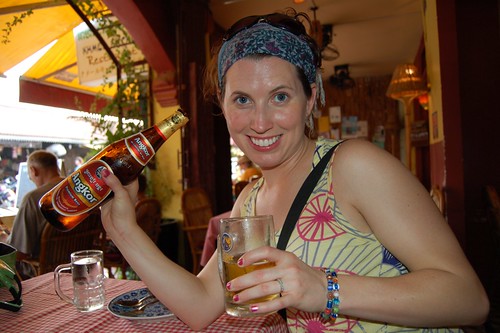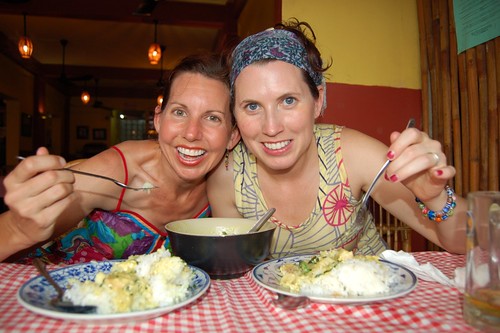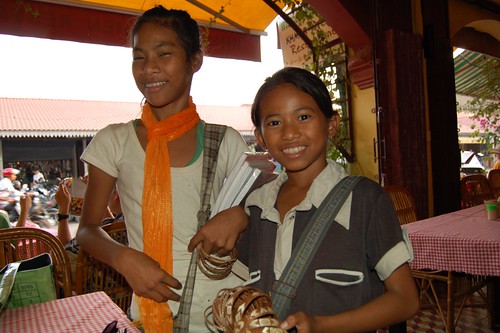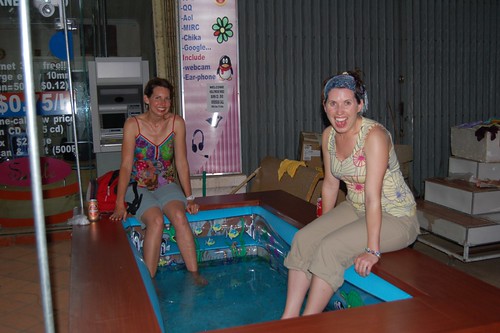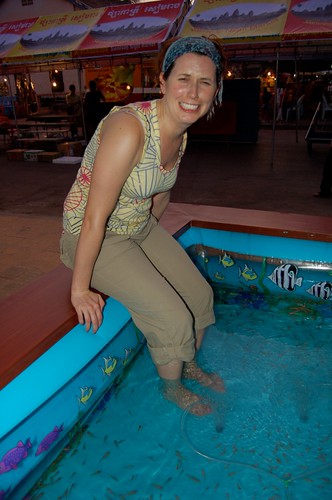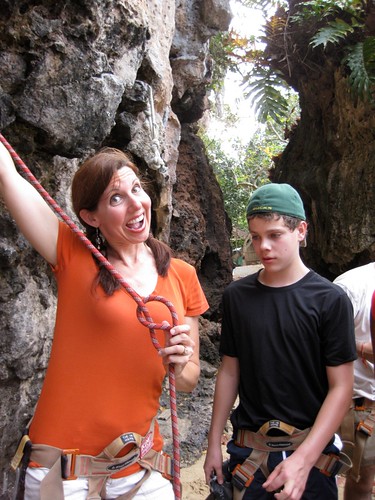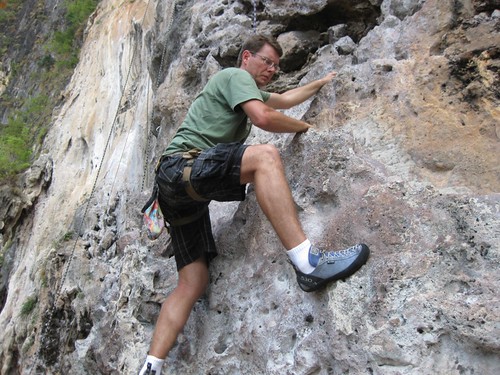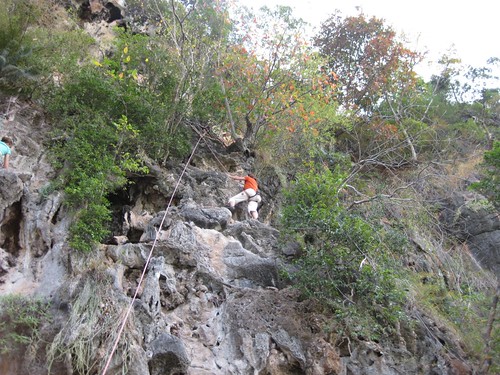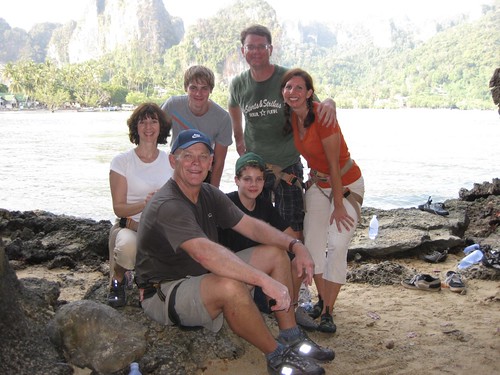This week’s installment of Wat ‘O’ the Week comes to you from Luang Prabang, where my sister and I celebrated Wat Wednesday. The historic little city in northern Laos boats 32 Buddhist temples built before the French showed up in 1887 for 58 years of colonization. Much to Megan’s relief, I didn’t make her visit all of them.
We were on the quest of a particular novice monk, who chatted with my friends, Tony and Rand, during their visit to Luang Prabang last fall. So we started at the temple where he was supposed to be “stationed” (or whatever verb you use to describe where a monk lives). “Novice Lai works at Blah Blah Temple now,” a monk told us. Only he didn’t say “blah blah,” and we were too intimidated to ask for clarification. I thought I heard a word that started with “K,” and the monk gestured in a direction that had only a few more blocks before we would hit the confluence of the Kham and Mekong rivers. So how hard could it be?
Unfortunately, we never found Lai. Sometimes being a girl traveler is a real disadvantage, particularly when it comes to approaching monks. They were all friendly enough, but Meg and I both worried that we were violating some patriarchal protocol by walking past the regular temple buildings to hunt down Lai in the residential areas.
However, we did enjoy visiting a few temples before heading back to Vientiane. Here are some highlights:
Built in 1714, this temple had some interesting details.
The windows were pretty flashy.

In the Buddha chapel, I loved that someone put a tiny elephant on one of Buddha’s big toes.

This funky guy with a fish in his claws was a nice touch.

Wat Sop Sickharam
These monks picked a perfect spot for studying.
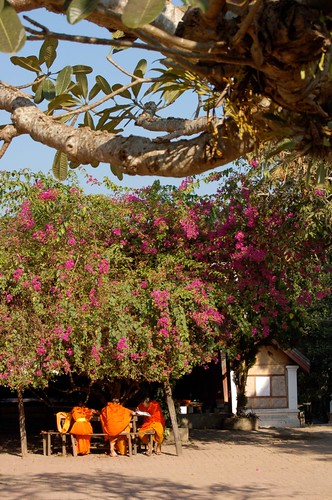
Rice cakes were drying in the sun at the temple.
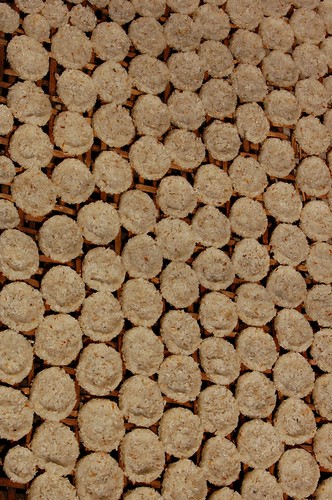
Wat Sirimounkhounsayaram
We walked around this temple, but I didn’t take any photos. It wins the prize for longest name, though.
Wat Xieng Thong
This is Luang Prabang’s most famous temple. Construction on the sim (ordination hall) started in 1560 right on the banks of the Mekong River, and other buildings were added over the years. The sim’s sweeping roof is considered a hallmark of traditional Luang Prabang temple architecture.
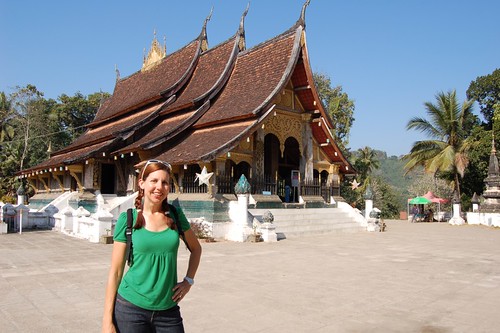
The back of the sim features a spectacular “tree of life” mosaic, and similar mosaics cover the exterior walls of other buildings on the temple grounds, as well.
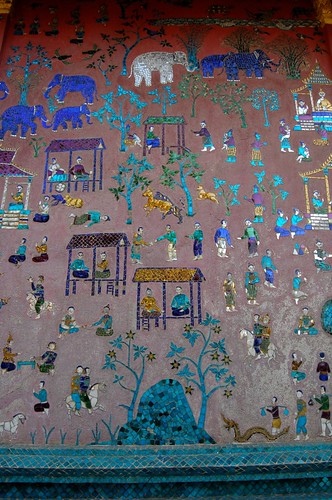
I always enjoy seeing daily life depicted in art like this detail of villagers cutting rice, particularly meaningful next to the offering of sticky rice that someone had placed on the ledge.
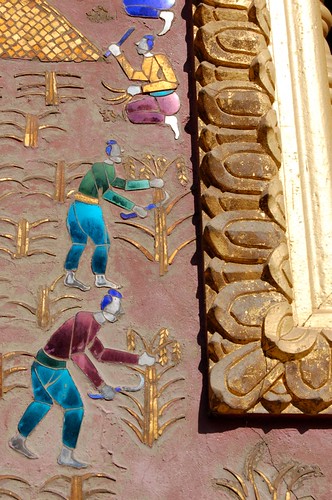
Inside the temple’s carriage house, we saw a 12-meter-high (39-foot-high) funeral carriage.

Pretty detail on the carriage house door.
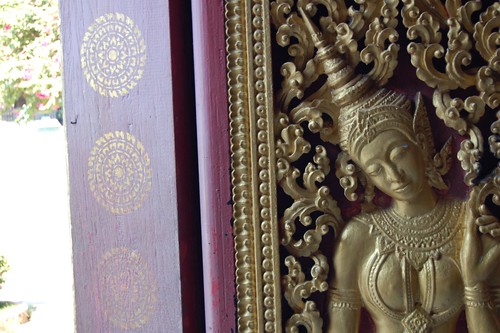
We also liked this Buddha in the carriage house. He’s standing in the posture that’s often associated with making peace with relatives, but the expression on his face suggests he’s thinking, “Seriously, I have to break up another squabble? Come on, people! Where’s the love?”
